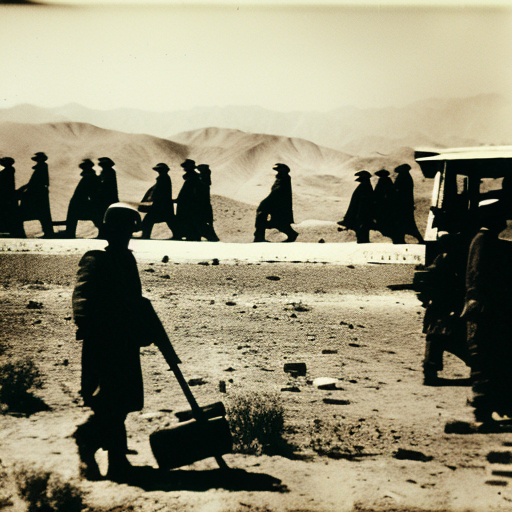Afghanistan Conflict: A Comprehensive Summary
The Afghanistan conflict refers to the ongoing armed conflict that has plagued Afghanistan since the late 1970s. It has involved various factions, including Afghan government forces, foreign military forces, and numerous insurgent groups. The conflict has had far-reaching consequences for Afghanistan and the international community, with significant political, social, and economic implications.
Background
The conflict in Afghanistan can be traced back to the Soviet invasion of the country in 1979. The Soviet Union sought to prop up a communist government in Afghanistan, leading to a decade-long war against Afghan resistance fighters known as the Mujahideen. The conflict resulted in significant casualties and displacement of Afghan civilians.
Taliban Rule and International Intervention
Following the Soviet withdrawal in 1989, Afghanistan descended into a state of civil war, with various factions vying for power. In 1996, the Taliban, an extremist Islamist group, emerged as a dominant force and established control over most of the country. The Taliban’s harsh interpretation of Islamic law and their support for international terrorist organizations, such as Al-Qaeda, led to international condemnation.
In response to the September 11, 2001, terrorist attacks in the United States, a U.S.-led coalition launched Operation Enduring Freedom in Afghanistan. The primary objective was to dismantle Al-Qaeda and remove the Taliban from power. The coalition quickly toppled the Taliban regime, but the conflict continued as the Taliban regrouped and launched an insurgency against the Afghan government and international forces.
Insurgency and Counterinsurgency
The insurgency in Afghanistan has been characterized by guerrilla warfare tactics employed by the Taliban and other insurgent groups. They have targeted Afghan security forces, government officials, and civilians, as well as international military forces. The conflict has resulted in a significant loss of life and has displaced millions of Afghans.
The international community, led by the United States, has engaged in a counterinsurgency campaign aimed at stabilizing Afghanistan and building up Afghan security forces. The strategy has involved a combination of military operations, development projects, and efforts to promote good governance. However, progress has been slow, and the security situation remains volatile in many parts of the country.
Political Developments and Peace Efforts
Over the years, several attempts have been made to find a political solution to the conflict. In 2004, Afghanistan adopted a new constitution and held its first presidential elections. However, the insurgency persisted, and efforts to negotiate a peace settlement have faced numerous challenges.
In recent years, there have been renewed efforts to bring the conflict to an end. In 2020, the United States and the Taliban signed a historic peace agreement that outlined a timeline for the withdrawal of international forces and the start of intra-Afghan negotiations. These negotiations aim to determine the future political structure of Afghanistan and address the concerns of various Afghan stakeholders.
Humanitarian and Economic Impact
The conflict in Afghanistan has had a devastating impact on the country’s population. Civilians have borne the brunt of the violence, with thousands killed or injured and many more displaced. The conflict has also hindered economic development and access to basic services, such as healthcare and education.
International aid has played a crucial role in mitigating the humanitarian crisis in Afghanistan. However, the country continues to face significant challenges in terms of poverty, corruption, and governance. The ongoing conflict has hindered efforts to address these issues effectively.
Conclusion
The Afghanistan conflict has been a protracted and complex conflict with significant regional and global implications. While progress has been made in certain areas, the conflict continues to pose challenges to stability and peace in Afghanistan. Efforts to find a lasting political solution and address the underlying causes of the conflict remain crucial for the future of Afghanistan and its people.












